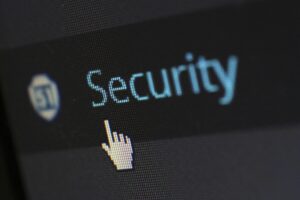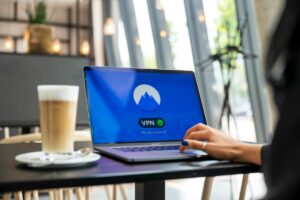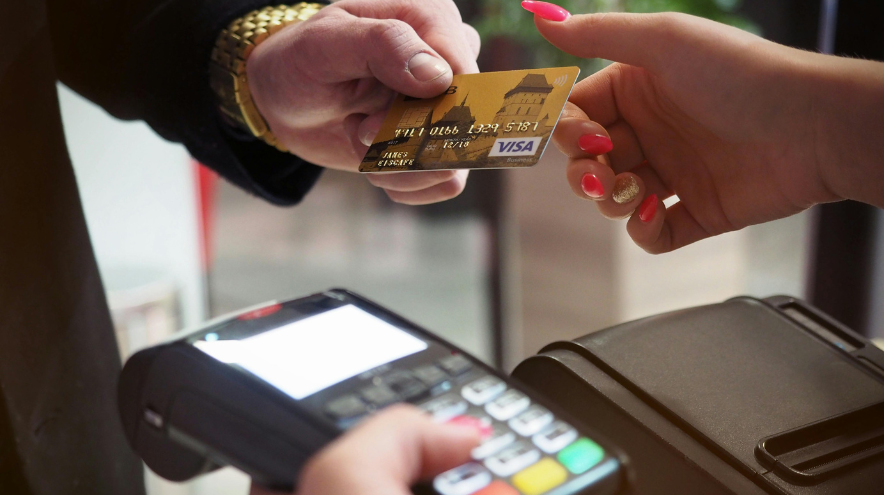“The Business Advantages of Remote Monitoring”

As our world becomes increasingly digital, remote monitoring has emerged as a crucial tool for businesses and individuals alike. With the ability to monitor and control devices from afar, remote monitoring offers a range of benefits, from increased efficiency to improved safety and security. But what exactly is remote monitoring, and how does it work? In this article, we’ll delve into the basics of remote monitoring, exploring its uses, benefits, and applications across a variety of industries. Whether you’re a business looking to streamline your operations or an individual looking to keep a closer eye on your home or property, understanding the fundamentals of remote monitoring is key. So let’s dive in and explore this innovative technology together.
What is Remote Monitoring?
Remote monitoring refers to the process of monitoring and collecting data from a remote location using various technologies. It involves the use of sensors and data collection devices to gather information in real-time, which is then transmitted and analyzed to provide valuable insights. Remote monitoring has become increasingly popular in many industries due to its ability to enhance efficiency, improve productivity, and streamline operations.
Why is Remote Monitoring Important?
Remote monitoring plays a crucial role in various industries, revolutionizing the way businesses operate.
Here are some key reasons why remote monitoring is important:
Enhancing efficiency and productivity: Remote monitoring allows businesses to monitor processes and assets remotely, reducing the need for manual checks and increasing efficiency. By collecting real-time data, businesses can identify bottlenecks, optimize workflows, and make data-driven decisions to improve productivity.
Cost savings: Remote monitoring helps minimize unplanned downtime and equipment failures by detecting potential issues early on. This proactive approach reduces maintenance and repair costs and maximizes the lifespan of assets. Additionally, remote monitoring eliminates the need for on-site monitoring, saving businesses time and resources.
Ensuring compliance and safety: In industries such as healthcare and manufacturing, remote monitoring ensures compliance with regulations and safety standards. By continuously monitoring critical parameters, businesses can mitigate risks, prevent accidents, and ensure a safe working environment.
How Does Remote Monitoring Work?
Understanding the process and technologies involved in remote monitoring is essential to grasp its functionality and benefits.
Here’s a breakdown of how remote monitoring works:
Explaining the process of remote monitoring: Remote monitoring starts with the installation of sensors and data collection devices at the remote location. These devices collect data from various sources, such as equipment, machines, or environmental conditions. The collected data is then transmitted to a central hub through communication channels for analysis and storage.
Technologies involved in remote monitoring: Remote monitoring utilizes a range of technologies, including sensors, Internet of Things (IoT) devices, and networking technology. These technologies enable the seamless collection, transmission, and analysis of data in real-time.
Real-time monitoring and data collection: One of the key advantages of remote monitoring is its ability to collect and analyze data in real-time. Real-time monitoring allows businesses to stay informed about critical parameters, detect anomalies, and take immediate actions when necessary. This capability enables proactive decision-making and enhances overall operational efficiency.
Applications
Remote monitoring finds applications in various industries, bringing significant advantages and improvements to different sectors.
Here are some notable industries utilizing remote monitoring:
Remote monitoring in healthcare: Remote monitoring plays a vital role in healthcare, allowing doctors to monitor patients’ vital signs, track medication adherence, and detect abnormalities remotely. It enables remote patient care, reduces hospitalization, and improves patient outcomes.
Remote monitoring in manufacturing: In the manufacturing sector, remote monitoring facilitates real-time monitoring of production lines, equipment performance, and quality control. It helps optimize production processes, minimize downtime, and enhance production efficiency.
Remote monitoring in energy and utilities: Remote monitoring is extensively used in the energy and utilities industry to monitor and optimize energy consumption, detect leaks or faults in infrastructure, and ensure efficient operations. It aids in reducing energy waste, improving sustainability, and maintaining infrastructure integrity.
Other industries utilizing remote monitoring: Remote monitoring is also applied in sectors such as agriculture, transportation, logistics, and building management systems. It enables remote tracking of assets, monitoring environmental conditions, and optimizing resource usage for increased efficiency.
Key Components
To understand the functionality of remote monitoring systems, it’s important to identify their key components.
Here are the fundamental elements of a remote monitoring system:
Sensors and data collection devices: Sensors act as the data collection devices in remote monitoring systems. These devices are strategically placed to collect data from various sources, such as temperature, pressure, vibration, or energy consumption. The collected data is then transmitted for further analysis.
Data transmission and communication channels: Remote monitoring systems rely on communication channels to transmit data from the remote location to a central hub. This can be achieved through wired or wireless networks, depending on the system’s specific requirements.
Data storage and analysis platforms: The collected data is stored and processed in data analysis platforms. These platforms enable businesses to make sense of the data, identify trends or anomalies, and generate actionable insights. Advanced analytics tools and machine learning algorithms are often used to extract valuable information from the data.
https://fiscalfitnessflow.com/index.php/2023/12/19/smart-home-automation-for-comfort-and-security-excellence/
Remote Monitoring vs. Traditional Monitoring
Contrasting remote monitoring with traditional monitoring methods is crucial in understanding the advantages of remote monitoring.
Here’s how remote monitoring differs from traditional methods:
Contrasting remote monitoring with traditional monitoring methods: Traditional monitoring methods often involve manual checks or periodic inspections to gather data. This approach is time-consuming and prone to human error. Remote monitoring, on the other hand, enables continuous monitoring and real-time data collection, eliminating the need for manual intervention or physical presence.
Advantages of remote monitoring over traditional methods: Remote monitoring offers several advantages over traditional methods, including increased efficiency, reduced downtime, and improved decision-making. It allows businesses to monitor operations remotely, proactively detect issues, and take immediate action. Remote monitoring also provides real-time insights, ensuring quick response times and minimizing the risk of costly failures.
Key Considerations
Before implementing remote monitoring systems, businesses should consider several factors to ensure successful deployment.
Here are some key considerations:
Factors to consider before implementing remote monitoring: It is important to assess the specific needs and requirements of the business. Factors such as the goals of implementing remote monitoring, the scale and complexity of the operations, and the available resources should be taken into account. Additionally, understanding the potential benefits and ROI of remote monitoring is crucial for decision-making.
Common challenges and solutions in remote monitoring implementation: Implementing remote monitoring systems may come with challenges such as connectivity issues, data security concerns, or interoperability with existing systems. By conducting thorough planning, ensuring compatibility with existing infrastructure, and addressing potential roadblocks, businesses can mitigate these challenges effectively.
Data Security
Ensuring data privacy and security is of utmost importance when implementing remote monitoring systems.
Here are some practices to protect remote monitoring systems from cyber threats:
Ensuring data privacy and security in remote monitoring systems: Encryption and secure transmission protocols should be implemented to safeguard data during transmission. Access controls, authentication measures, and user privileges need to be carefully managed to prevent unauthorized access. Additionally, regular security audits and vulnerability assessments should be conducted to identify and address any potential vulnerabilities.
Best practices for protecting remote monitoring systems from cyber threats: Businesses should follow best practices, such as keeping software and firmware up to date, using strong passwords, and educating employees about cybersecurity risks. Implementing multi-factor authentication, firewalls, and regular data backups are also essential for protecting remote monitoring systems and data.
Remote Monitoring Best Practices
To optimize the benefits of remote monitoring, businesses should follow some best practices.
Here are a few tips for effective remote monitoring:
Tips for effective remote monitoring: Establish clear monitoring goals and objectives, ensuring they align with the overall business objectives. Regularly analyze the data collected to identify trends and anomalies. Set up real-time alerts and notifications to promptly address any issues. Additionally, establish a protocol for communication and coordination between stakeholders involved in remote monitoring.
Optimizing remote monitoring for maximum efficiency: Continuously evaluate and optimize remote monitoring systems to ensure maximum efficiency. Regularly review the data collected, analyze performance metrics, and identify areas for improvement. Consider incorporating advanced analytics techniques, such as predictive maintenance or prescriptive analytics, to further enhance operational efficiency.
Remote Monitoring Tools and Technologies
Numerous remote monitoring tools and technologies are available in the market.
Here’s an overview of some popular options:
Overview of popular remote monitoring tools and technologies: Cloud-based remote monitoring platforms, IoT devices, and edge computing solutions are widely used in remote monitoring. These tools enable seamless data collection, analysis, and visualization, providing businesses with actionable insights and real-time monitoring capabilities.
Features and functionalities of remote monitoring software: Remote monitoring software often includes features such as customizable dashboards, real-time data visualization, configurable alerts and notifications, and advanced analytics capabilities. These tools offer scalability, flexibility, and ease of integration with existing systems, making remote monitoring more efficient and user-friendly.
Conclusion
In conclusion, remote monitoring is an increasingly vital aspect of many industries, offering numerous benefits in terms of efficiency, productivity, and real-time insights. By understanding the basics of remote monitoring, its applications, and the key components involved, businesses can embrace this technology to optimize their operations and gain a competitive advantage. With proper planning, consideration of key factors, and adherence to best practices, remote monitoring systems can provide valuable data, enhance decision-making capabilities, and pave the way for the future of monitoring technologies.
https://aws.amazon.com/?nc2=h_lg
FAQ’s
1. What is remote monitoring?
Remote monitoring is a method of collecting data from a device or system remotely using technology such as sensors, wireless communication, and software.
2. How does remote monitoring work?
Remote monitoring works by using sensors to collect data from a device or system and send it wirelessly to a software platform. This platform then analyzes the data and provides insights and alerts to users.
3. What are the benefits of remote monitoring?
Remote monitoring provides many benefits, including real-time monitoring, early detection of issues, improved efficiency, cost savings, and enhanced safety.
4. What types of devices and systems can be remotely monitored?
Almost any device or system can be remotely monitored, including medical devices, industrial equipment, environmental sensors, and home appliances.
5. Is remote monitoring secure?
Yes, remote monitoring is typically secure as it uses encryption and other security measures to protect data and prevent unauthorized access. However, it is important to choose a reputable provider and follow best practices for cybersecurity.







